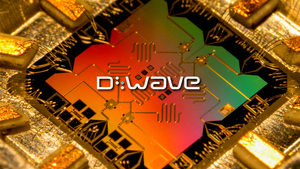
AST SpaceMobile (NASDAQ: ASTS), a company at the forefront of building a space-based cellular broadband network, has once again captured the market's attention with a recent surge in positive sentiment. Despite experiencing short-term volatility, the company's long-term trajectory remains robust, underscored by significant year-to-date gains exceeding 143%. The latest catalyst driving investor interest is a timely stock purchase by a company director, signaling strong internal confidence in AST SpaceMobile's ambitious vision and upcoming milestones. This move highlights why ASTS continues to be an intriguing and closely watched market mover in the burgeoning satellite communication sector.
The director's purchase, coupled with the anticipation surrounding a critical satellite launch, paints a complex but compelling picture for investors. While the company grapples with the inherent challenges of pioneering new technology and achieving profitability, these recent developments provide a much-needed boost, reinforcing the narrative of a company with substantial disruptive potential. Market participants are keenly observing how these factors will play out in the coming weeks and months, as AST SpaceMobile aims to transform global connectivity.
Insider Confidence and Critical Milestones Fuel Optimism
The recent positive movement in AST SpaceMobile's stock was significantly bolstered by a strategic acquisition made by one of its directors. On November 20, 2025, Adriana Cisneros, a director at AST SpaceMobile, reported an indirect open-market purchase of 750 Class A common shares. These shares, acquired through trusts benefiting her children, were bought at an average price of $50.79 per share, totaling $38,092.50. This transaction increased her indirect beneficial ownership to 784,077 shares. Such director purchases are frequently interpreted by the market as a powerful vote of confidence from within the company's leadership, suggesting a belief that the stock is undervalued or poised for future growth, especially given the purchase price was below the stock's trading price of $53.7 at the time.
This insider buying activity, though modest in scale, stands out against a backdrop of broader insider selling observed over the past 6 to 12 months, where other executives like the Chief Technology Officer, President, CFO, and COO have sold shares worth millions. While this mixed insider activity presents a nuanced view, Cisneros's purchase, occurring just four days prior to the current date, has contributed to a positive sentiment. This was further amplified by the announcement of the impending BlueBird 6 satellite launch. Scheduled for December 15, 2025, from India's Satish Dhawan Space Center, this satellite is a game-changer. It will deploy the largest commercial phased-array antenna ever in low Earth orbit, an innovation expected to boost data capacity tenfold. The news of this upcoming launch alone spurred a 6.6% premarket increase in ASTS shares on November 21, 2025, demonstrating the market's sensitivity to operational milestones.
These developments occur as AST SpaceMobile navigates a period of significant expansion and technological validation. The company aims to deploy between 45 and 60 satellites by the end of 2026 to achieve continuous global coverage, making each successful launch a critical step towards realizing its ambitious network vision. The positive reaction to the director's purchase and the BlueBird 6 announcement underscores the market's focus on tangible progress and leadership conviction as the company moves from development to deployment.
Market Implications: Winners, Losers, and Strategic Partnerships
The unfolding events surrounding AST SpaceMobile (NASDAQ: ASTS) have clear implications for several key players in the financial markets and the telecommunications industry. The most direct beneficiary, should its technology prove successful, is AST SpaceMobile itself. The recent director purchase and the impending BlueBird 6 launch instill investor confidence, potentially attracting further capital and driving stock appreciation. Success in deploying its constellation and achieving operational milestones could cement its position as a leader in the nascent space-to-phone segment, unlocking significant revenue streams from its strategic partnerships. However, the company faces considerable challenges, including its current unprofitability, recent earnings misses, and the dilutive effect of a nearly $24 million follow-on equity offering. The mixed signals from insider trading, with some executives selling, also present a cautionary note, suggesting that while long-term potential is high, the path to sustained profitability may be arduous.
The ripple effects extend to AST SpaceMobile's critical partners, who stand to gain substantially from the successful deployment of its network. Telecommunications giants like Verizon (NYSE: VZ) and Vodafone (NASDAQ: VOD), along with the stc group, have entered into strategic agreements, including convertible investments and commercial prepayments. These partnerships are designed to leverage AST SpaceMobile's technology to extend their cellular coverage to underserved areas, enhance existing services, and potentially reduce customer acquisition costs by tapping into ready-made customer bases. Their success is intrinsically linked to AST SpaceMobile's ability to deliver on its technological promises, offering them a competitive edge in a rapidly evolving connectivity landscape.
Conversely, traditional satellite communication providers and even some terrestrial telecom companies that rely solely on conventional infrastructure could face increased competition or pressure to innovate. Companies like SpaceX's Starlink or Eutelsat's OneWeb, while operating in a similar space, have different approaches to satellite internet, primarily focusing on direct-to-device internet access rather than direct cellular connectivity. Should AST SpaceMobile successfully bridge the gap between space and standard mobile phones, it could disrupt existing market dynamics, compelling competitors to re-evaluate their strategies and accelerate their own R&D efforts in satellite-to-cellular capabilities. The potential "losers" are those unable to adapt to this shift towards pervasive, satellite-enabled mobile connectivity.
Broader Significance and Industry Transformation
AST SpaceMobile's recent activities, particularly the director stock purchase and the imminent BlueBird 6 launch, resonate deeply within the broader industry trends of global connectivity and space technology. This event underscores the accelerating race to deliver ubiquitous mobile broadband from low Earth orbit (LEO), transforming how people and devices connect, especially in remote or underserved regions. The company's focus on direct-to-standard-phone connectivity positions it uniquely, aiming to eliminate coverage gaps that plague traditional cellular networks. This fits into a larger narrative of converging technologies, where space infrastructure is increasingly seen as an extension of terrestrial networks rather than a separate entity.
The potential ripple effects on competitors and partners are substantial. For traditional Mobile Network Operators (MNOs) not partnered with AST SpaceMobile, the success of its network could mean a competitive disadvantage, pushing them to seek similar satellite-to-cellular solutions or risk losing market share in remote areas. For existing satellite communication providers, it signifies a new frontier of competition and collaboration, potentially leading to new alliances or accelerated innovation in their own offerings. Regulatory bodies globally will also face increasing pressure to adapt policies and allocate spectrum for these hybrid space-terrestrial networks, ensuring fair competition and reliable service while managing the complexities of international satellite operations.
Historically, the space industry has seen cycles of ambitious ventures, some succeeding spectacularly and others faltering. The current boom, fueled by private investment and technological advancements, draws parallels to the early days of satellite television or the dot-com era, where foundational infrastructure was being laid. AST SpaceMobile's journey reflects the high-stakes nature of these ventures, where significant capital expenditure and technological breakthroughs are required before widespread adoption and profitability. The company's current valuation, with a high Price-to-Book ratio of 11.5x and a median analyst price target of $57.5 (with some as high as $95.00), reflects both the immense potential and the inherent risks associated with pioneering such a transformative technology. The Beneish M-Score, while high at 12.11, suggests caution, yet the strong Altman Z-Score of 9.25 indicates underlying financial health.
What Comes Next: A Critical Juncture for Space-Based Connectivity
The immediate future for AST SpaceMobile (NASDAQ: ASTS) is heavily focused on the success of its upcoming BlueBird 6 satellite launch on December 15, 2025. This event is not just another launch; it represents a crucial technical validation and a significant step towards proving the scalability and effectiveness of its massive phased-array antenna technology. A successful deployment and demonstration of enhanced data capacity will be a powerful short-term catalyst, likely further boosting investor confidence and potentially driving stock performance. Conversely, any delays or technical setbacks could introduce volatility and temper optimism.
Looking further ahead, the long-term possibilities hinge on AST SpaceMobile's ability to scale its constellation from the planned 45-60 satellites by the end of 2026 and to transition from pre-revenue development to generating substantial revenue and, ultimately, profitability. This will involve the continued execution of its manufacturing and launch schedule, seamless integration with partner networks like Verizon (NYSE: VZ) and Vodafone (NASDAQ: VOD), and the effective monetization of its services. Strategic pivots might include expanding its service offerings beyond basic cellular broadband, exploring new market segments, or forging additional partnerships to accelerate global reach.
Market opportunities that may emerge include capturing a significant share of the global "unconnected" population, providing critical backup communication during disasters, and enabling IoT applications in remote areas. However, challenges persist, including intense competition from other LEO satellite operators, the continuous need for substantial capital investment, and the inherent complexities of operating a global satellite network. Investors should watch closely for operational updates post-launch, progress on constellation deployment, and, critically, the company's path to achieving positive cash flow and profitability in its quarterly earnings reports. The success or failure of AST SpaceMobile will serve as a bellwether for the broader space-to-phone industry, shaping future investment and technological development in this exciting frontier.
A High-Stakes Bet on Global Connectivity
AST SpaceMobile's recent market activity, punctuated by a director's stock purchase and the highly anticipated BlueBird 6 satellite launch, encapsulates the high-risk, high-reward nature of pioneering ventures in the space economy. The director's vote of confidence, though a relatively small transaction, provides a psychological boost, signaling internal conviction in the company's long-term potential. This positive sentiment is further amplified by the upcoming technological milestone of BlueBird 6, which promises to significantly enhance the network's capabilities and bring AST SpaceMobile closer to its vision of ubiquitous global cellular broadband.
However, investors must weigh these catalysts against persistent challenges. The company's current unprofitability, recent earnings misses, and the dilutive effects of equity offerings underscore the significant capital requirements and operational hurdles inherent in deploying a global satellite constellation. The mixed signals from insider trading, with some executives selling shares, also add a layer of complexity to the investment thesis. Nevertheless, AST SpaceMobile's strategic partnerships with major telecom players and its innovative direct-to-standard-phone technology position it as a potential disruptor in the telecommunications landscape.
Moving forward, the market will be keenly watching for the successful launch and operational validation of BlueBird 6, followed by concrete progress on scaling the satellite constellation and, most importantly, a clear path to sustained revenue growth and profitability. The success of AST SpaceMobile will not only validate its own business model but also serve as a critical indicator for the broader space-to-cellular industry. Investors should monitor quarterly financial results, progress on satellite deployment, and any further insider trading activity as key indicators of the company's trajectory in the coming months. The journey to connect the unconnected from space is fraught with challenges, but the potential rewards are immense, making AST SpaceMobile a compelling, albeit speculative, investment in the evolving frontier of global connectivity.
This content is intended for informational purposes only and is not financial advice.





